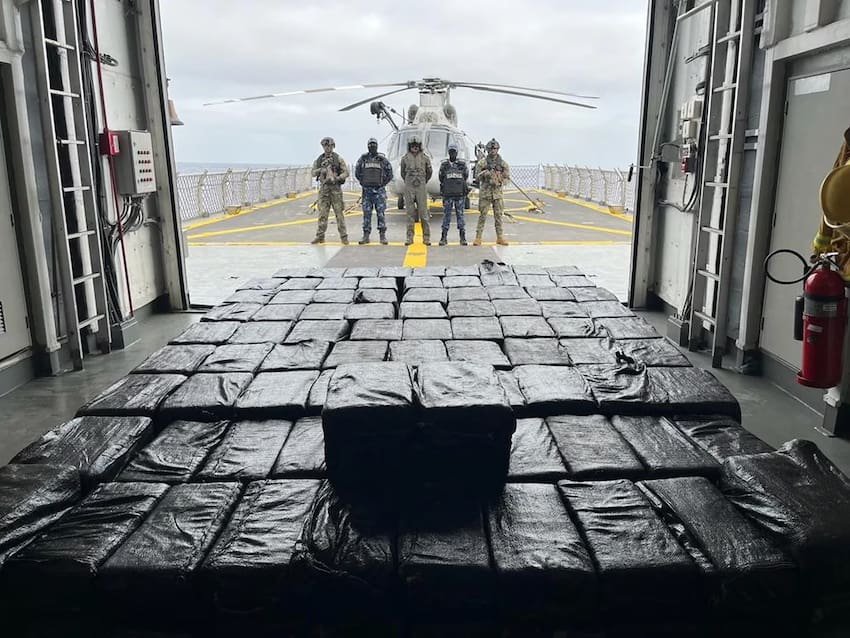The Mexican Navy (Semar) seized 3.5 tonnes (or metric tons) of cocaine off the coast of Baja California on Tuesday, after intercepting the biggest narco-submarine detected in the last five years.
The vessel is 26 meters long, with two internal engines. It had an average speed of eight knots and could remain at sea autonomously for up to 20 days. The navy said in a statement that the vessel had the largest load capacity of any semi-submersible seen during the current administration of President López Obrador, who took office in 2018.

“After [the semi-submersible] was located, it was followed by Mexican navy aircraft, so that navy ships equipped with helicopters and interceptor patrols were positioned for the interdiction of the illicit vessel,” the statement said.
The navy stressed that advanced training was required to carry out the operation, as “the officers boarded the illicit vessel in motion, under conditions of strong wind and waves on the high seas.”
Authorities seized 186 packages of cocaine, which were handed over to law enforcement officers in La Paz, Baja California. Five crew members of different nationalities were arrested.
With this latest incident, the Mexican Navy has seized almost 21.3 metric tons of cocaine and arrested 121 people at sea so far this year. The increased naval activity is in addition to seizures on land and in ports, including a huge seizure of nearly 40 metric tons of “material contaminated with cocaine” in the port of Ensenada, Baja California, last month.
By comparison, by mid-June last year, the navy had seized 14 metric tons of cocaine at sea, on land and in ports – at the time considered a notably large figure. The navy commented in September 2022 that a sharp increase in cocaine seizures at sea has been seen during AMLO’s administration. Less than 40 metric tons were seized during the previous six-year term of President Enrique Peña Nieto.
With reports from La Jornada and Infobae
